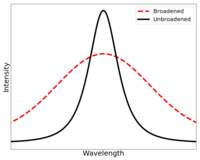
Photo from wikipedia
Electrocardiogram (ECG) is often used together with a spectral Doppler ultrasound to separate heart cycles by determining the end-diastole locations. However, the ECG signal is not always recorded. In such… Click to show full abstract
Electrocardiogram (ECG) is often used together with a spectral Doppler ultrasound to separate heart cycles by determining the end-diastole locations. However, the ECG signal is not always recorded. In such cases, the cardiac cycles can be estimated manually from the ultrasound data retrospectively. We present a deep learning-based method for automatic detection of the end-diastoles in spectral Doppler spectrograms. The method uses a combination of a convolutional neural network (CNN) for extracting features and a recurrent neural network (RNN) for modeling temporal relations. In echocardiography, there are three Doppler spectrogram modalities, continuous wave, pulsed wave, and tissue velocity Doppler. Both the training and test data sets include all three modalities. The model was tested on 643 spectrograms coming from different hospitals than in the training data set. For the purposes described in this work, a valid end-diastole detection is defined as a prediction being closer than 60 ms to the reference value. We will refer to these as true detections. Similarly, a prediction farther away is defined as nonvalid or false detections. The method automatically rejects spectrograms where the detection of an end-diastole has low confidence. When setting the algorithm to reject 1.9%, the method achieved 97.7% true detections with a mean error of 14 ms and had 2.5% false detections on the remaining spectrograms.
Journal Title: IEEE Transactions on Ultrasonics, Ferroelectrics, and Frequency Control
Year Published: 2020
Link to full text (if available)
Share on Social Media: Sign Up to like & get
recommendations!